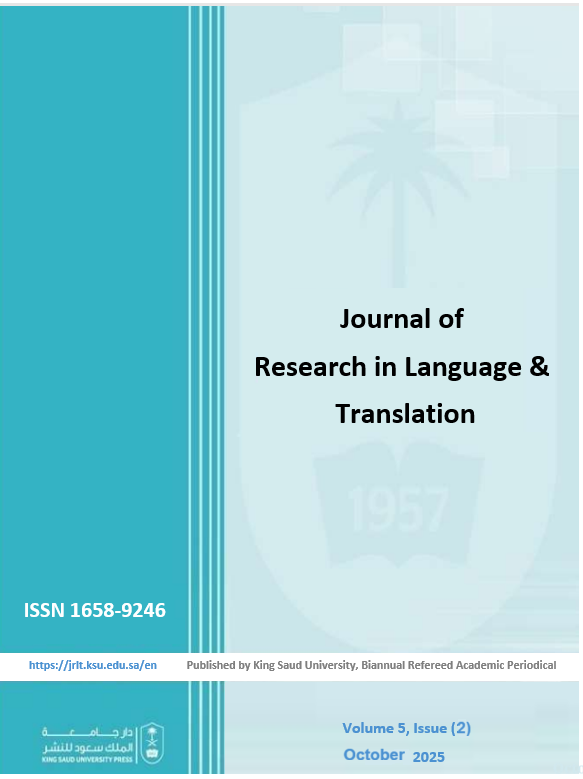Morphophonological Patterns of Diminutive Nouns in Modern Standard Arabic: A Templatic and Moraic Analysis
DOI:
https://doi.org/10.33948/JRLT-KSU-5-2-9Keywords:
Modern Standard Arabic, diminutives, nonconcatenative morphology,, autosegmental phonology, moraic structure, templatic morphologyAbstract
This study investigates the morphological and phonological structures of diminutive nouns in Modern Standard Arabic (MSA), focusing on their classification, formation processes, and theoretical implications. Drawing on naturally occurring linguistic data, the research identifies six primary moraic templates that govern diminutive formation: disyllabic iambic, trisyllabic amphibrachic (with and without feminine markers), trisyllabic anapaestic, tetrasyllabic quartus paeonic, and tetrasyllabic secundus paeonic structures. These templates illustrate the systematic nature of diminutive morphology in Arabic, which operates through predictable phonological and morphological rules.
The study employs a combination of autosegmental phonology, moraic theory, and templatic morphology to analyze diminutive formation. The findings reveal that diminutive morphemes in Arabic are not inserted as single affixes but are distributed throughout the word, consistent with Arabic’s nonconcatenative morphological system. This process, known as transfixation, involves the interleaving of vowels and consonants to restructure the base word. Notably, diminutive morphology often overrides other morphemic influences, such as pluralization, demonstrating its dominance in word formation.
Key patterns identified include the consistent use of [u] as the first vowel and [aj] as a glide in diminutive forms. The study extends previous research by McCarthy and Prince (1990) and Watson (2006) by documenting previously unexamined structures, such as tetrasyllabic patterns for longer roots. These findings highlight the regularity and complexity of Arabic diminutives, challenging assumptions about their arbitrariness.
The implications of this research extend beyond Arabic linguistics, offering insights for comparative studies with other nonconcatenative languages, such as Hebrew and Maltese. Future research could explore whether similar morphological processes exist in other Semitic languages, contributing to a broader understanding of nonconcatenative morphology in linguistic theory.

